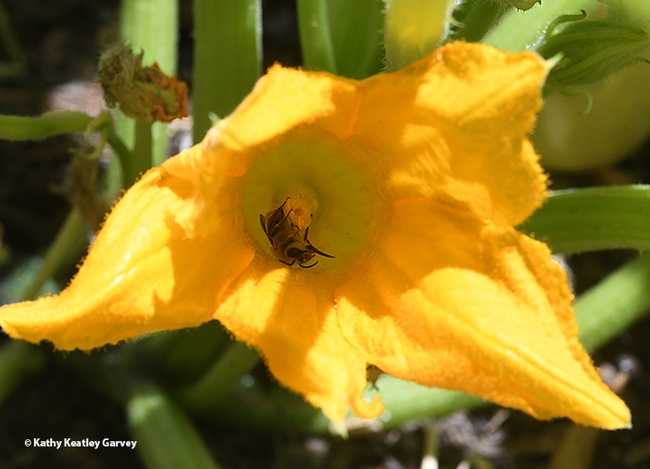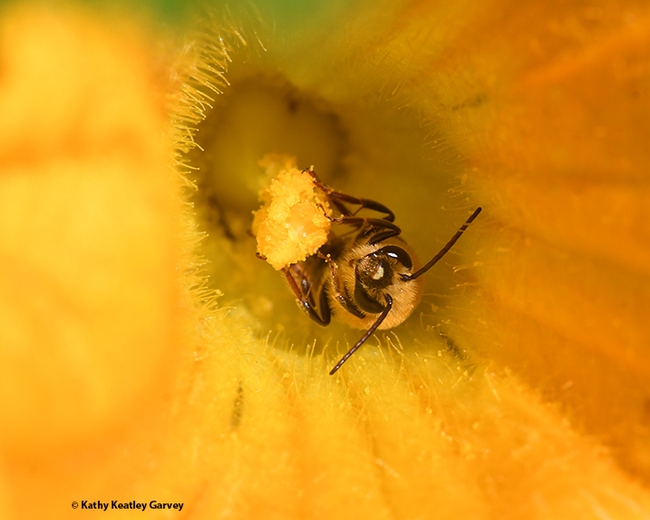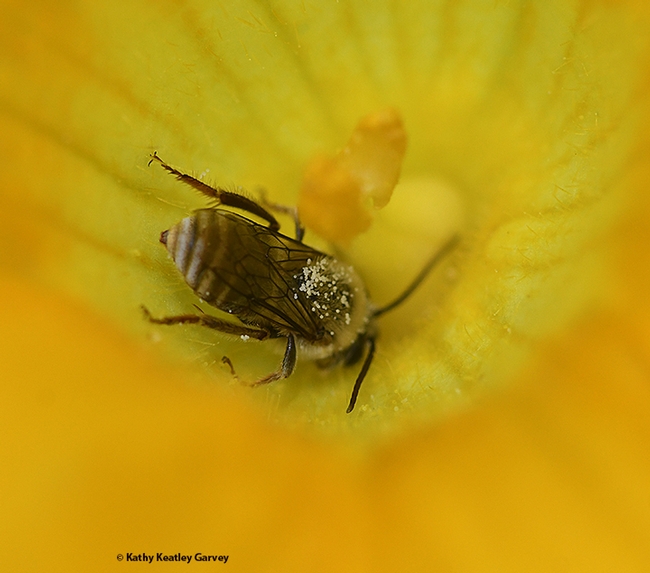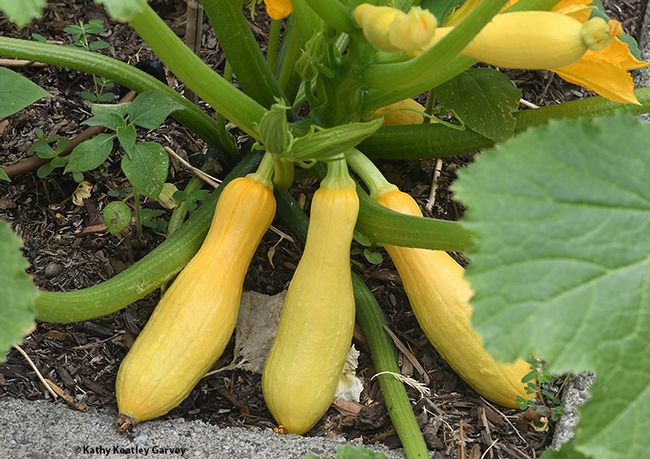Got squash blossoms? You've probably got squash bees.
Unlike honey bees, which are generalists, squash bees are specialists. They pollinate only members of the cucurbits or squash family, Cucurbitaceae, which includes pumpkins, squash, gourds, cucumbers and zucchini.
This is National Pollinator Week (June 22-28) and we're paying tribute to all the pollinators, which include the alliterative bees, birds, butterflies, bats and beetles.
Ah, squash. We planted crooked neck squash in our pollinator garden for two reasons, not necessarily in this order: (1) to harvest a few squash and (2) to admire and photograph the squash bees.
Our temporary residents are Peponapis pruinosa, a species of solitary bee in the tribe Eucerini, the long-horned bees.
The late Robbin Thorp (1933-2019), distinguished emeritus professor of entomology at UC Davis, told us some factoids:
- Both the males and females are golden brown with a fuzzy yellow thorax. The males have a yellow spot on their face.
- Males sleep in the blossoms at night. There they wait for the females to arrive.
- Squash bees are early risers (they rise before the sun does). They begin pollinating the blossoms as soon as they open in the morning. Other bee species, such as honey bees, don't visit the flowers so early. The squash blossoms close after several hours so there's a limited amount of pollination time.
If you're aiming to photograph them, "bee" an early riser.
Attached Images:

What's pollinating the squash blossom? A squash bee, Peponapis pruinosa, a species of solitary bee in the tribue Eucerini. (Photo by Kathy Keatley Garvey)

A squash bee, Peponapis pruinosa, foraging in a crooked- neck squash blossom. (Photo by Kathy Keatley Garvey)

A squash bee, Peponapis pruinosa, dusted with pollen from the crooked-neck squash blossom. (Photo by Kathy Keatley Garvey)

The fruit of their labors. (Photo by Kathy Keatley Garvey)